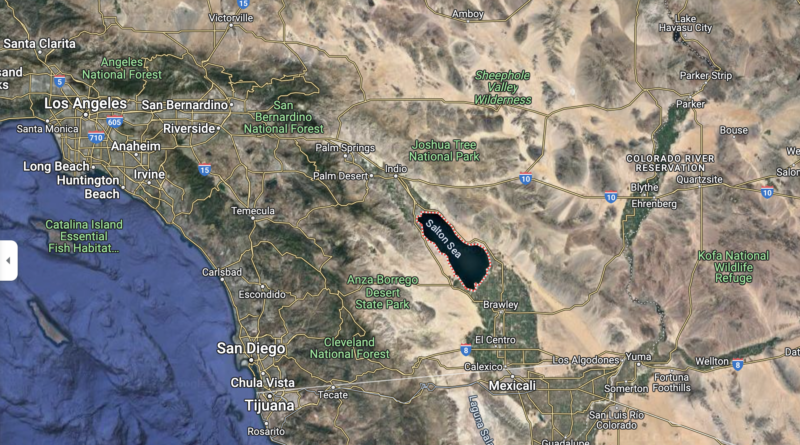Analysis Concludes the Region Could Meet the Nation’s Need for the Critical Mineral through Extraction from Geothermal Brines Using Innovative Technologies in Development WASHINGTON, D. C. — The U.
S. Department of Energy (DOE) recently announced results of the most comprehensive analysis to date quantifying the domestic lithium resources in California’s Salton Sea region. Conducted by DOE’s Lawrence Berkeley National Laboratory, the analysis found that with expected technology advances, the Salton Sea region’s total resources could produce more than 3,400 kilotons of lithium, enough to support over 375 million batteries for electric vehicles (EV)—more than the total number of vehicles currently on U.
S. roads. The analysis confirms the region has significant potential as a domestic source of this critical mineral used in batteries for stationary storage and EVs, both of which are crucial to the Biden-Harris Administration’s goal of a net-zero emissions economy by 2050.
“ Lithium is vital to decarbonizing the economy and meeting President Biden’s goals of 50% electric vehicle adoption by 2030,” said Jeff Marootian, Principal Deputy Assistant Secretary for Energy Efficiency and Renewable Energy. “This report confirms the once-in-a-generation opportunity to build a domestic lithium industry at home while also expanding clean, flexible electricity generation. Using American innovation, we can lead the clean energy future, create jobs and a strong domestic supply chain, and boost our national energy security.
” The United States currently has limited capabilities to extract, refine, and produce domestically sourced lithium, meaning nearly all lithium for U. S. needs must be imported.
Geothermal brines, which are a byproduct of geothermal electricity generation, often have high concentrations of minerals like lithium and zinc. While exact concentrations of these minerals depend on the location and surrounding geology, the use of direct lithium extraction (DLE) from geothermal brines offers a promising opportunity to couple clean, renewable electricity with a source of domestic lithium . Findings of the analysis are based on the ability to access the entire Salton Sea geothermal reservoir for electricity production, as well as the ability to fully extract lithium resources from resulting geothermal brines.
The Salton Sea Known Geothermal Resource Area (KGRA) has about 400 megawatts (MW) of geothermal electricity-generation capacity installed and is estimated to have the potential for up to 2,950 MW, leaving extensive room to increase geothermal electricity generation while accessing more of the region’s available lithium resources—enabling the United States to meet or exceed global lithium demand for decades. The study also assessed environmental impacts of lithium extraction, including water use, air emissions, and solid waste, and engaged the surrounding community for listening sessions and other discussions to ensure consideration for local concerns and ideas. The combined subsurface geology and geothermal activity in the Salton Sea’s KGRA result in high concentrations of lithium, and the KGRA has long been eyed as a rich source of the critical mineral.
In 2020, the California State Legislature established a commission to investigate and analyze eight topics related to lithium extraction in California. The commission’s final report notes that the Salton Sea KGRA is believed to have the highest concentration of lithium contained in geothermal brines in the world and offers recommendations aimed at expanding geothermal energy and lithium extraction from geothermal brines in the region. The Geothermal Technologies Office (GTO) funded the lithium quantification report, part of DOE’s portfolio researching lithium extraction from geothermal brines .
The portfolio also includes GTO’s recent American-Made Challenges Geothermal Lithium Extraction Prize and a joint $11 million R&D program , funded by the Advanced Materials and Manufacturing Technologies Office and supported by GTO, to develop and accelerate technologies for extracting and converting battery-grade lithium from geothermal brines. This lithium research is part a broader suite of DOE investments in critical materials, including the recent launch of a first-of-its-kind Critical Materials Collaborative , funding to strengthen domestic critical material supply chains and domestic battery manufacturing , and a forthcoming Critical Materials Accelerator Program . Originally published on Energy.
gov . Featured image courtesy of Google Maps. LinkedIn WhatsApp Facebook X Email Mastodon Reddit.
From: cleantechnica
URL: https://cleantechnica.com/2023/12/27/u-s-department-of-energy-analysis-confirms-californias-salton-sea-region-to-be-a-rich-domestic-lithium-resource/



